Stew’s Introduction
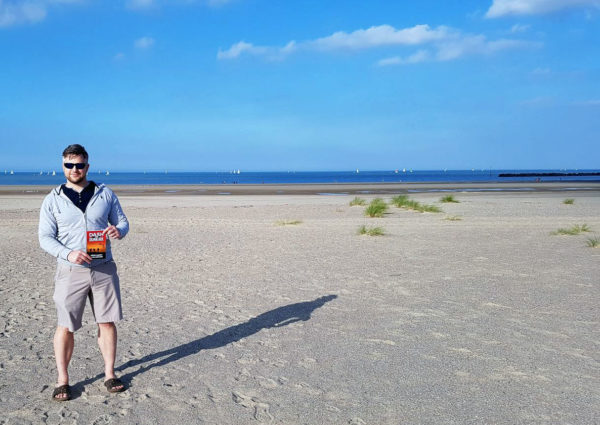
I’m very excited to have Denis Caron as our guest blogger today. Denis is an accomplished historical fiction author specializing in military history and World War II (more on that later). His blog describes how a British soldier gave up his seat for a wounded comrade on one of the Dunkirk boats and was unable to catch another ride back to England. Traveling on foot, he ultimately outwitted the Germans and provides an uplifting story about perseverance, fortitude, and resourcefulness.
Did You Know?
Denis mentions how 80,000 British and French soldiers were left behind in Dunkirk. What many people don’t know is how many French soldiers were captured by the Germans during the Battle of France. During May and June 1940 as the Nazis swept into France, approximately 2.0 million French soldiers were taken prisoner. This represented around ten percent of the total adult male population of France at the time. Despite Vichy’s attempt to gain their release (e.g., the relève program), the majority of these men spent the war as POWs in either Oflags (Officers’ Camp) or Stalags (all others). Most of the prisoners were used for manual labor on farms with their wages confiscated by the Germans. After the Liberation, the men came home to a rather hostile environment. Based on prior Vichy propaganda, it was thought the prisoners lived in better conditions than the general French population under the Occupation. The men were held responsible for the French defeat at the hands of the Nazis and considered cowards who surrendered rather than fighting. Members of the French Resistance and Free French Forces were held in higher esteem. It wasn’t until the 1950s that the former prisoners were granted the rights and benefits of being considered recognized veterans.
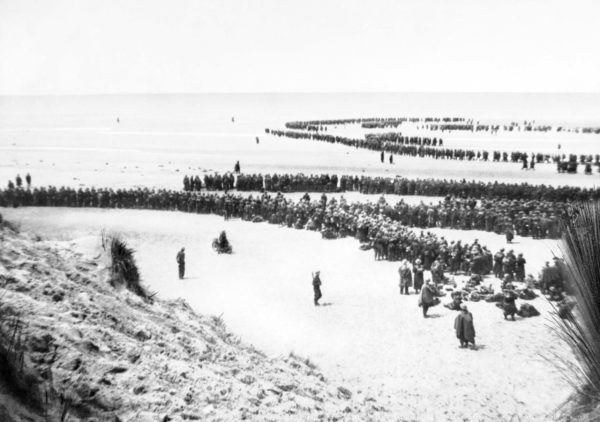
From 27 May to 4 June 1940, 338,226 men escaped from the beach at Dunkirk. Many of you know how British citizens answered the call with their little ships, putting themselves in the line of fire to rescue people thus increasing the number of lives saved. Prime Minister Churchill called this a ‘miracle’, later using the term ‘Dunkirk Spirit’ to refer to the solidarity of the British people.

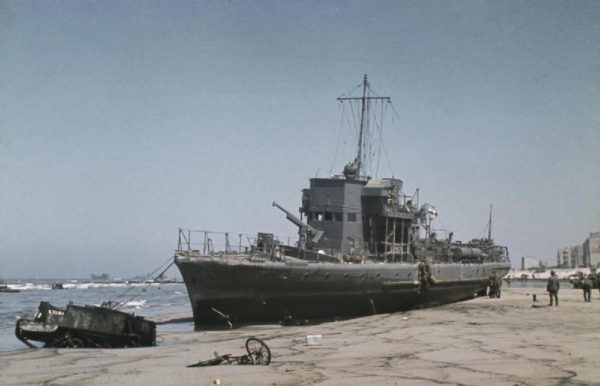
What most of you do not know is the fact that 80,000 British and French soldiers in the Dunkirk vicinity were left behind. Many were captured, others died fighting, and a smaller number attempted to escape to the woods. There simply wasn’t enough time or boats to rescue everyone. If you’re a daydreamer like me, I know you are already picturing this exact scenario in your head.
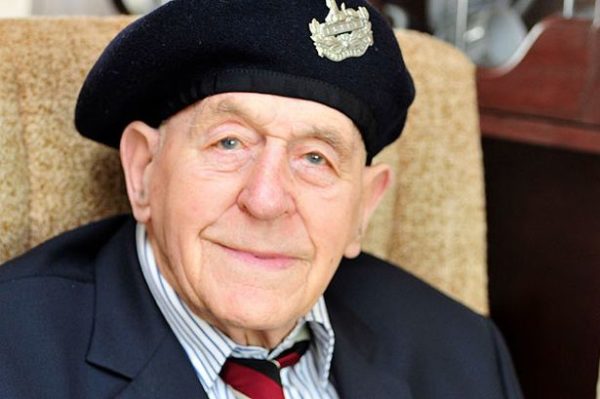
Here is the story of Bill Lacey who found himself in just this precarious situation.
‘I watched the last of the little ships sailing away without me, and I knew there was no hope that there would be any more coming back,’ Bill told The Telegraph in a 2010 interview. “I had climbed on to a boat. Then a wounded-casualty had to be taken on board, so I got off to make room for him. When I turned round the boat was going. I was stranded’ he remembered. ‘The gunfire was getting nearer and the Nazis were rounding up the stragglers.’
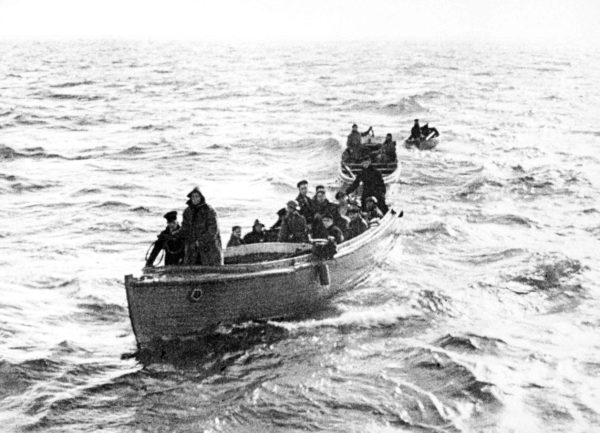
This was the deciding moment; either he surrenders to the Germans, or he runs and hides in the countryside. Bill, at the time aged 20, made the critical decision to do the latter.
‘Men were still standing in line on the landing jetty, half-expecting that another boat would arrive in time, but I knew it was pointless. We had fought hard, but we couldn’t fight any more. We were overwhelmed. I could see German troops pouring on to the beach, so I ran in the opposite direction, towards the road, then crossed into a patch of woodland.’
Gradually, as he ran farther and farther into the woods, the sound of fighting on the beach began to fade. Having successfully evaded the German patrols, his plan was to head south in the hope of finding other British troops.
He threw away his weapon and dumped his uniform, he was alone and lost in hostile territory. If found, he would surely be shot on sight.
‘I had to get rid of my uniform, so the first trick I learned was how to steal clothes,’ Bill explains: ‘I raided washing lines in farmyards. Or even easier, farm workers often hung their shirts and jackets across bushes, to dry.’
Days turned into months. ‘I had to learn to stay alive the same way a wild animal would, my only thought was to survive from one day to the next.’
He would go days without food, his weight eventually started to drop till it reached only seven stone (98 lbs).
‘I had to take food where I could find it. I stole from fields and I drank from streams. Then I discovered that in the countryside no one had locks on their kitchen doors. You just needed to be extremely careful, because the heavy latches that the French used made a terrible clunk as they opened. I would have to freeze in the dark, waiting to hear if I had woken anyone. Then I would grab what I could – bread, cheese, milk, anything baking in the oven – and run for it.’
His routine was to sleep during the day and move at night. He had close calls with German patrols once, which forced him to hide under a pile of dry leaves and narrowly escaping a sniffer dog.
After months of evading the enemy, with worn out army boots, he realized he had been walking in a big circle. ‘I started to lose my spirit’ he admitted. Freezing and hungry, reaching an all-time low, he decided to give himself up.
‘If they shot me, I didn’t care anymore. I just wanted this to end. I turned in the direction of Dunkirk, intending to find a patrol and turn myself in. I couldn’t carry on, I hope people realize why.’
Amazingly, as he walked along the coast, he spotted a fishing boat tied to a small pier; a chance for an escape finally came his way. Waiting until dark he sails off for home.
Four months after giving up his spot in a boat to an injured comrade, Bill Lacey finally reached the shores near Devon, England. He was exhausted, dressed in stolen rags, weak from hunger, hair overgrown. His story, mostly unknown, was brought to light by a television documentary in 2000. He then became credited as the last man home from Dunkirk.
Not in my wildest dreams could I have ever imagined spending four months evading capture in the manner that Bill Lacey did. His resilience is incredible and awe-inspiring.
Bill went on the make a full recovery. His resourcefulness was noticed which eventually earned him a position in the special forces, taking part in a number of commando missions including one to capture a German General in Jersey which ended with him being shot and wounded.
He retired as a sergeant in 1964 before taking up a job as a postman.
Bill Lacey passed away on June 10, 2011, aged 91.
The Forgotten Heroes of Dunkirk
Watch the documentary Dunkirk: The Forgotten Heroes.
Denis tells me the film Dunkirk is relatively historically correct. You see, I rarely watch movies based on historical events that interest me. Why? Because they are basically historical fiction with the writers taking great liberties with the actual facts (I guess it’s mandatory to have that car chase and explosion in 14th-century England—though they probably do get the sex right).
Meet Denis Caron
Denis Caron was born in Trenton, Ontario and grew up in England. He returned to his native Canada where he now lives in Kitchener, Ontario. Denis received his college diploma in survey engineering and went on to serve in the Canadian Army and the Air Force. He now works for the emergency services.
Denis has long been interested in the military and in particular, World War II. This was the catalyst for Denis to write his first historical fiction book Dash for Dunkirk (along with Fran Connor). Denis is currently working on his next book which he tells me is about thirty percent completed. He anticipates finishing it by the end of this summer.
During his off-time, Denis enjoys sampling beers, travelling around Europe, and adding to his growing collection of World War II memorabilia. He enjoys relaxing and watching a good movie like Dunkirk.
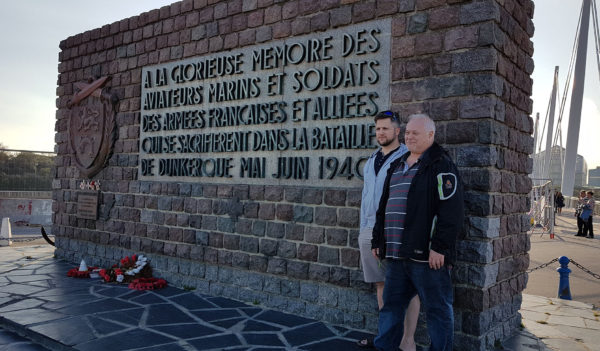
You can find Denis’s book Dash for Dunkirk at Amazon in both paperback and Kindle format.
Recommended Reading and Viewing
Caron, Denis and Fran Connor. Dash for Dunkirk. Kitchner, Ontario: Productivolgy, 2017.
Franklin, Sidney (producer). Mrs. Miniver. Starring Greer Garson and Walter Pidgeon. Metro-Goldwyn-Mayer Pictures. Based on the novel by Jan Struther. 1942.
Nolan, Christopher and Emma Thomas (producers). Dunkirk. Starring Fionn Whitehead and Tom Glynn-Carney. Warner Bros. Pictures. 2017.
What’s New With Sandy and Stew?
We just received our first shipment of the newly published Volume Two of Where Did They Burn the Last Grand Master of the Knights Templar? It’s always very exciting to have the physical book in one’s hands. This is the fourth book in what I hope to be a series on historical periods of Paris. The next two will be on the German Occupation followed by the seventh book Where Did They Bury Jim Morrison, the Lizard King? A Walking Tour of Curious Paris Cemeteries. We thought about moving on to London after that book but I’m thinking of staying in Paris for one or two more books: perhaps “The Lost Generation” and/or “Montmartre Artists.”
What do you think? You like those possibilities or do you have any suggestions that sound fun? Let us know.
Someone is Commenting On Our Blogs
I had my head buried in the computer the other day trying to make some headway into the next book Where Did They Put the Gestapo Headquarters? when Sandy brought over a couple of reviews that were posted on Amazon for several of the earlier books.
After I read them I was so jazzed. The comments lifted my spirits and confirmed what I said five years ago when I started this little project. If you assemble the right team, don’t compromise on quality, and produce a fun book with a purpose, readers will appreciate it. All we have to do now is get the distributors and book stores to agree with us. Yeah, like that’ll be happening any time soon.
If there is a topic you’d like to see a blog written about, please don’t hesitate to contact me. I love hearing from you so keep those comments coming.
Why Would You Want To Buy Our “Walks Through History” Books?
Simple.
You like to travel and experience history and historical events. You like to see original buildings that had a significant impact on the people and events of the history you’re engaged with. You want to know the stories behind the brick and mortar in front of you.
The walking tour books are meticulously researched so you can go directly to those sites and learn about the building’s history as well as an introduction to some of the more interesting people associated with it.
Thank You
Sandy and I appreciate you visiting with us. We have some exciting things on the horizon and we’ll keep you updated as we go along.
Share This:
Follow Stew:
Find Stew’s books on Amazon and iBooks.
Please note that we do not and will not take compensation from individuals or companies mentioned or promoted in the blogs.
Walks Through History
Copyright © 2018 Stew Ross

